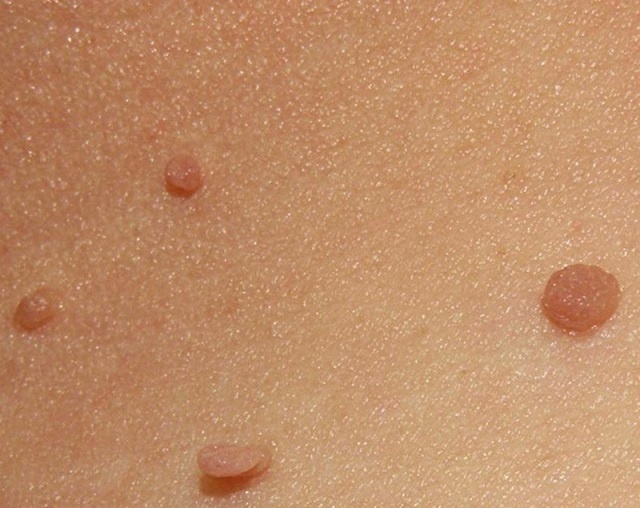
A Brief Overview of Skin Tags
Skin tags are small in size, benign in nature, and look like soft balloons of hanging skin. They are also known as acrochordon, cutaneous papilloma, cutaneous tag, fibroma pendulum, soft fibroma, and Templeton skin tags.
Initially, skin tags may be very small, roughly 2mm-5mm in diameter, which is approximately one-third to one-half the size of a pencil eraser. But, in some cases, these skin tags may grow big to the size of 1cm diameter or 5cm diameter.
These raised bumps and flaps are completely harmless, but they can be incredibly annoying especially due to its appearance. Skin tags can appear on any part of the skin; however, they are more likely to occur in those areas where skin rubs against skin or clothing. For instance, neck, upper chest, eyelids, under the breasts and armpits are a few vulnerable areas that remain susceptible to developing skin tags.
Even babies who are slightly plump may develop skin tags on their neck as the skin is likely to rub against each other in that area. Moreover, young kids may develop skin tags at their upper eyelids as they are likely to rub their eyes often.
Like many other skin issues, skin tags too have a genetic component. Besides, obese people too are at a higher risk of developing them as there is more flesh likely to rub against itself. Even pregnant women are at higher risk for developing skin tags due to hormone elevations.
Although tags can be acquired by anyone, more often they occur during middle age.
A Few FAQs about Skin Tags!
Are skin tags harmful?
The good news is, skin tags are not harmful and don’t usually cause discomfort and pain. It is, however, advisable to get them removed as their presence can affect a person’s self-esteem in the long-run.
What can I expect during the treatment of removing them?
A qualified technician will apply a node to your skin tag that produces a Radio Frequency (RF) at the end. This particular node will touch each tag at their base causing the tissue to coagulate and form a barrier to blood flow that ultimately helps in eliminating the tag. Once the treatment is over, the skin tag will dry up and turn dark in colour, and thereafter, fall off in a few day’s time.
Is the treatment painful?
Some patients may feel a bit uncomfortable during the procedure.
How long does the procedure take?
It entirely depends on the number of skin tags and their size. For instance, smaller tags will take about 10 to 15 minutes to remove whereas larger tags will take about 20 to 30 minutes.
What should I do if my skin tags do not fall off after one treatment?
In some cases, a second treatment is required. Remember, to go for the second treatment at least 2 weeks after the first treatment.
Why do skin tags develop?
Researchers do not have complete answers for their causes, but the majority of them agree that it is the friction due to rubbing of skin that is the most likely reason. Some of the other factors that perhaps contribute to skin tags are the presence of certain forms of viruses that give people warts, changes in hormones during pregnancy, and insulin resistance.
Are skin tags related to a tumour?
Skin tags are a type of harmless tumour, but are benign. Generally speaking, skin tags are not cancerous and don’t become cancerous if left untreated.
